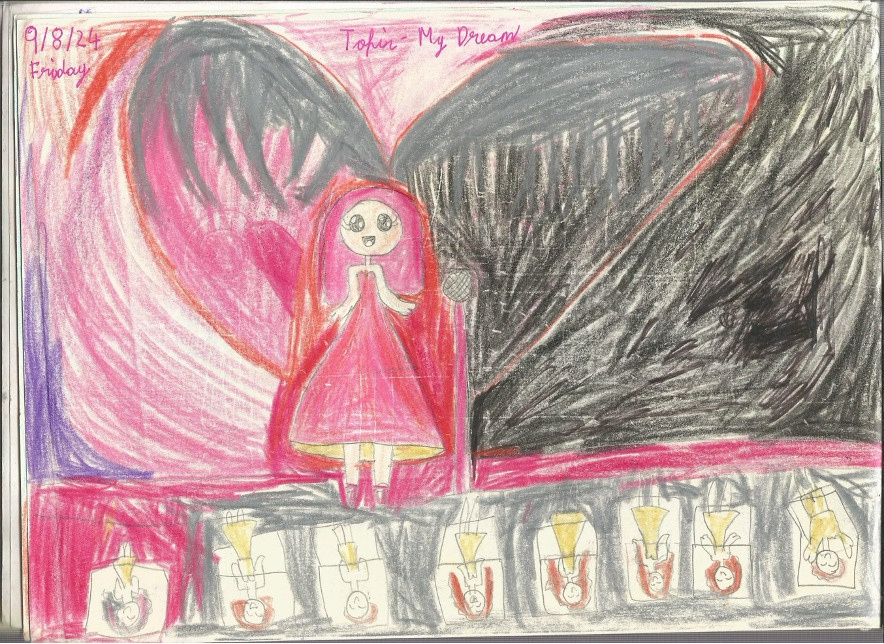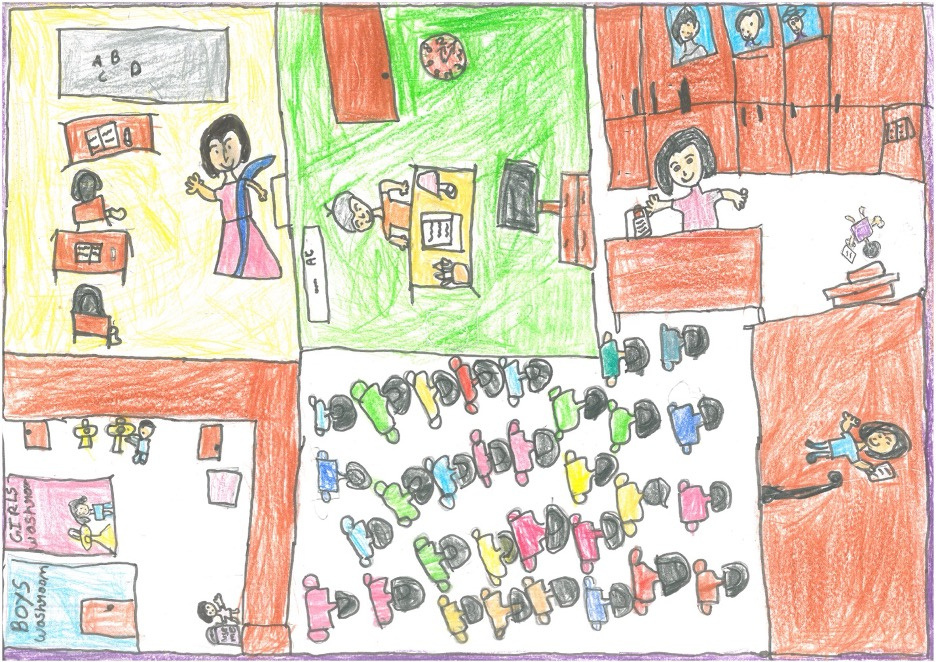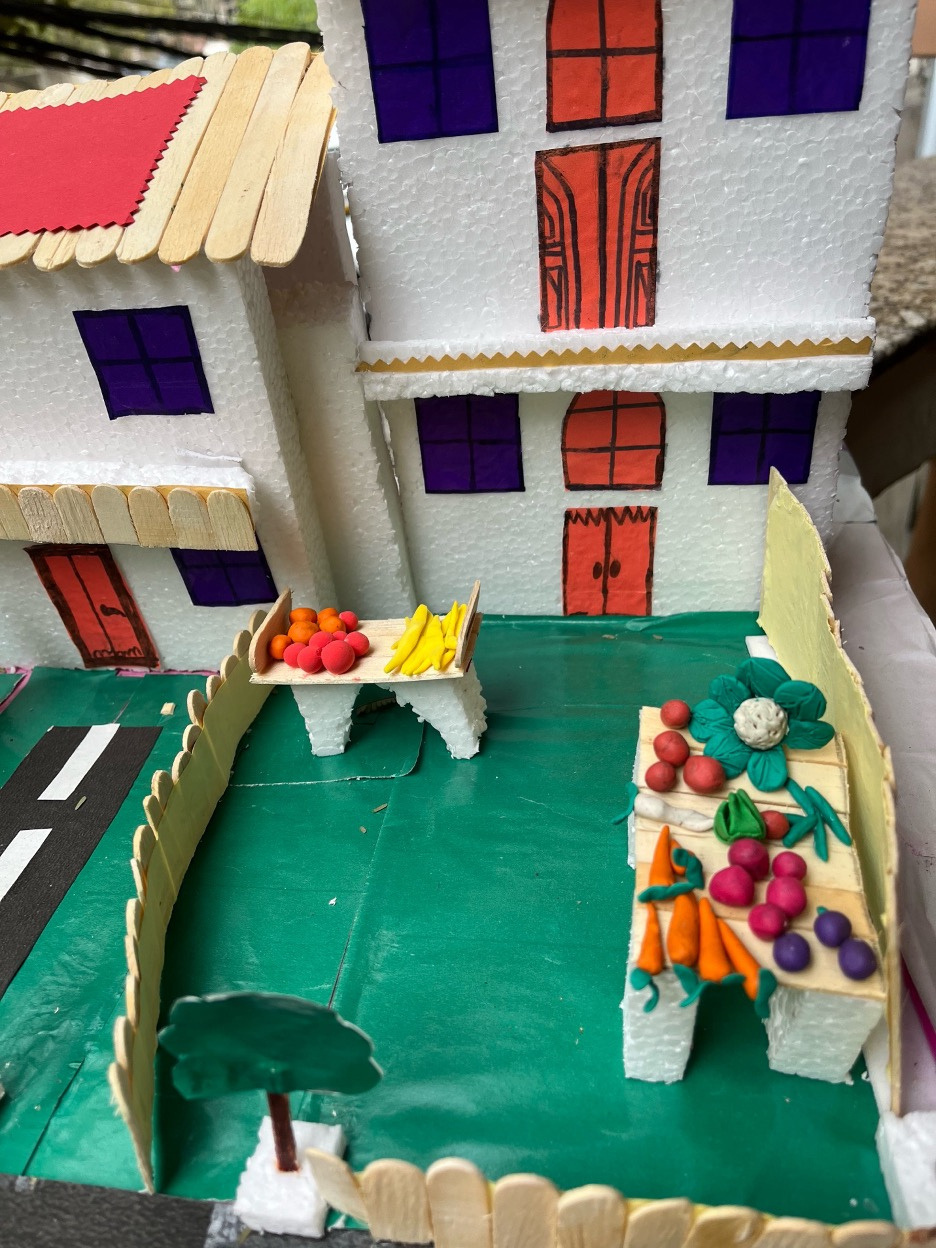Student Work
1. Drawing and Illustration


Drawing was the first medium of creative engagement introduced to the students. This activity was intentionally open-ended, designed not to test artistic skill, but to invite children to express themselves without fear or evaluation. Teachers and facilitators did not demonstrate how or what to draw; instead, students were simply encouraged to begin.
Each child was given space and time to interpret the themes in their own way. As they drew, facilitators moved around the room—asking questions, listening to stories, and helping students name their ideas. The act of drawing became a process of introspection, storytelling, and self-definition.
Key Themes Explored:
- My Dream: Imagining futures, freedom, and desires
- My Way to School: Depicting daily challenges, traffic, narrow lanes, and companionship
- My Village: Drawing memories of home—farms, rivers, and elders
- My Bedroom: Exploring privacy, possessions, and emotion in domestic spaces
- The Market / Mela / Festivals: Rich with color and detail, these drawings celebrated public life
Many students returned to similar symbols—trees, rooftops, temples, sweets, teachers, siblings. While some drawings reflected contentment, others quietly hinted at discomfort: crowding, pollution, or inequality. The drawings served as emotional and cultural maps, charting not only physical places but also relationships, routines, and dreams.
2. Model-Making


After their drawings, students began building three-dimensional models that gave form and depth to the places they had drawn. This phase translated their ideas and observations into physical, tangible objects. Using simple materials—cardboard, paper, clay, recycled items—students constructed miniature versions of spaces that mattered to them.
Some models were individual, others were collaborative efforts between 2–3 students. They were grouped by theme (e.g., home, school, street), with each model layered with emotional and architectural meaning.
Types of Models Created:
- School Building Models: Including classrooms, teacher tables, notice boards, even water coolers
- Neighborhood Layouts: Showing narrow alleys, corner shops, and communal courtyards
- Playgrounds and Parks: Often imagined larger and greener than real life
- Aspiration Models: Ideal schools, spacious homes, cleaner streets
The models offered new opportunities for reflection. Students articulated how the space felt, how they moved through it, and what they would change. For many, it was the first time they had visualized their world from above—from a planner’s or designer’s perspective. Spatial thinking, teamwork, and emotional memory all merged in this phase.
3. Narrative Transfer into Drama
Although performance is covered in its own page, it's important to note that student work directly informed the drama process. The stories, themes, and visuals explored in their drawings and models became the building blocks for theatrical scenes.
Students brought their models to the rehearsal space, discussed them with peers, and used them to craft characters and plots. A shopkeeper from a model became a central figure in the play; a cramped room drawn by a child became a moment of dramatic tension. The performance was not a separate activity—it was a collective culmination of all student work.
